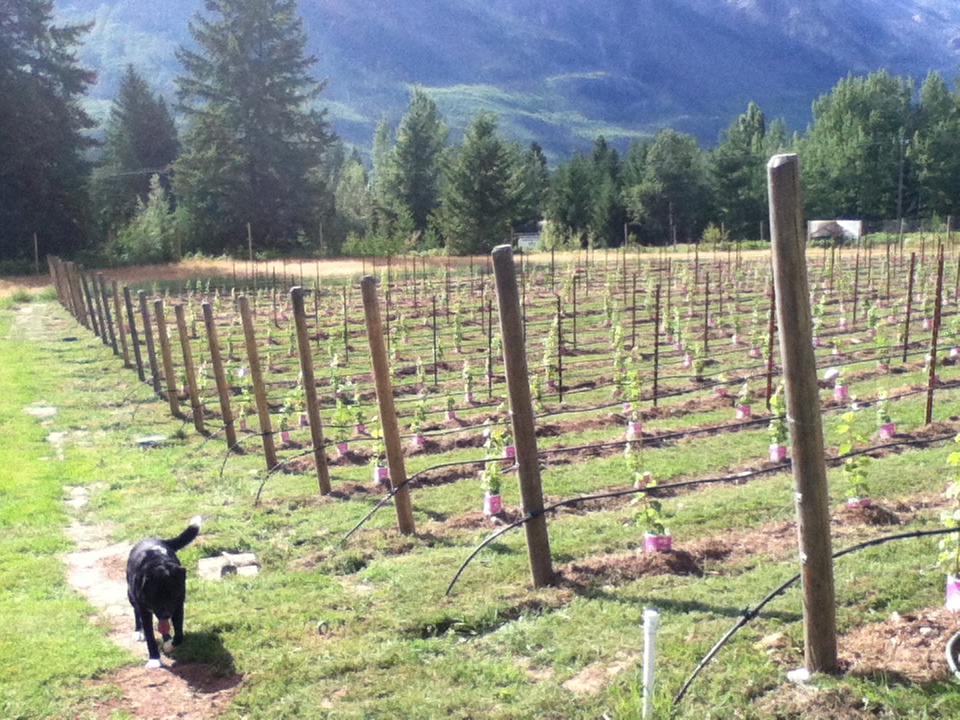 Irrigation: we are a fairly damp climate, and hopefully once the vines have been established we will not need to irrigate too much, but now when they are young, we do. We went with a drip system as it is the best method and pretty simply to install. Built-in emitters spaced every 18" and providing 0.5 gallons of water per hour.
Irrigation: we are a fairly damp climate, and hopefully once the vines have been established we will not need to irrigate too much, but now when they are young, we do. We went with a drip system as it is the best method and pretty simply to install. Built-in emitters spaced every 18" and providing 0.5 gallons of water per hour. We broke the vineyard into three zones so it takes a full day to water it all.
Bark Mulch: Plenty of volunteers showed up on mulching day and it went surprisingly fast due to the assistance of small bobcat that was able to scoop and dump strategically along the rows. Thanks Allan and Barbara! We ran out towards the end, so we still have a few more partial rows to finish off. I fear the mulch chore will be a yearly event, but for now it provides great weed control and moisture retention.
Weeding/Mowing: The mulch works really well, evident by comparing the areas without to area with it. But it is not perfect, so weed control around the vines and mowing is an on-going chore.

Vineyard Maintenance: - as the vines grow they tend to bend, twist and attached to just about anything so we have to continually "tie" the vines up to our stakes to ensure we get a nice straight stock, growing where we want them to. This is also an going chore, with some vines really taking off and others a little slower. Out of the 900ish vines we planted only 6 failed to produce shoots, which is amazing success rate.
This year we are all about root development and less about vigour.
So far all look healthy and green with no nutrient or disease concerns. It may be a bit biased to say, but is there anything more wonderful to look at then a healthy looking vineyard after three+ years of research and planning?



